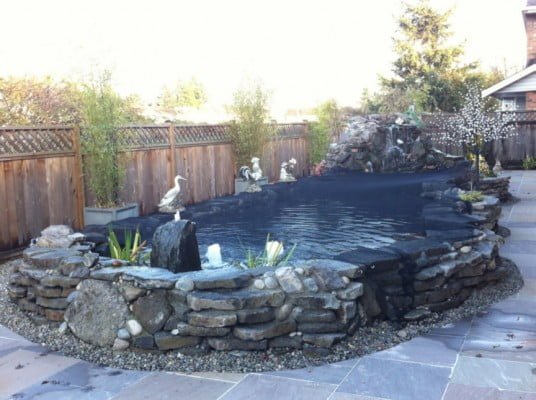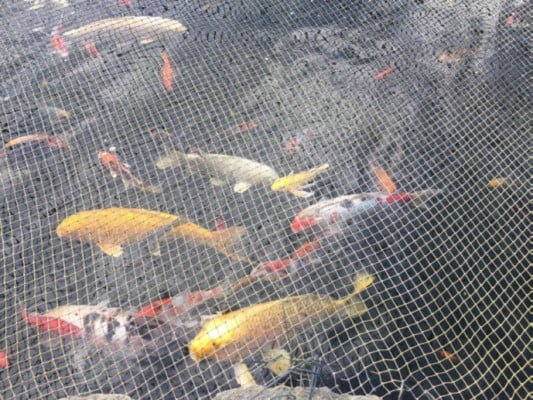Koi Keeping is an Art
Koi Keeping is an ancient art. Koi is a Japanese word meaning carp. The carp is a common freshwater fish found in many parts of the world. Koi were first discovered in the rivers of China, but kept and bred in Japan. Whereas the goldfish, also being a carp was first kept and bred in China. Being closely related, Koi and goldfish require the very same care, and can be diagnosed using the same symptoms; treated, using the same remedies. If you have Koi, you probably have a Koi pond whether it’s indoors or out. If you don’t, you will soon. The only difference between these freshwater fish, besides their physical characteristics; they grow much larger much faster. A mature Koi could reach up to 3′ in length
Koi Care
The same stocking levels we have listed in our 10 Steps apply to Koi; 2.5 gallons of water per inch of Koi body. The biggest mistake novice Koi keepers make is overstocking their ponds. Koi can grow as much as two to three inches per year, averaging 20 to 30 years of age if kept well
Koi are Pond fish
Koi are kept in large ponds because of their large size, and because of it, they typically have fewer health issues. Most ponds have a lush layer of algae; very beneficial for the Koi nutritionally, and helpful in keeping nitrate levels low
Algae feeds on nitrates
Some pond keepers don’t realize water changes must be performed to keep nitrates low if there is not enough vegetation available for doing the job. Some pond keepers try eliminating algae, because they don’t like the look of it, but algae is found in any natural habitat of Koi or goldfish. Having other plants may also be helpful in keeping nitrates low, but no other plant does this job quite as well, and no other plant is as nutritious as algae
Art of Koi
The water quality in a pond is typically better than that of an indoor tank. The surface is large by comparison, which increases the oxygen absorption of the water, but this doesn’t mean the value of pond water should be overlooked. The parameters of the water should be examined periodically. Koi require the same value of water that goldfish do; the same cooler but heavily oxygenated water that is free of toxins; free of gases
Koi Keeping
Comfort zones (with the higher side preferred)
General hardness; GH 200 to 400 ppm
Carbonate hardness; KH 70 to 120 ppm
Potential of hydrogen; pH 7.4 to 8.4 ppm
Floating issues are rare in a healthy pond rich in edible plant life. The Koi can graze on the roughage throughout the day; keeping the tract moving and healthy. Just like goldfish, Koi spend every waking hour eating or looking for food, and just like goldfish, they have no stomachs; their food is quickly digested because of it. In their natural environment vegetation is plentiful. The competition is stiff, and foods higher in protein, such as fish eggs, worms and small fry are few and far between
Koi Keeping
Another common trait Koi and goldfish share; both are piglets when it comes to eating and both are omnivorous. Overfeed your Koi, and they will gorge, which can lead to a slow or impacted intestinal tract. Because the Koi’s tract is connected to the swim bladder, constipation leads to floating issues. If not for the sake of the fish, then for the sake of the cycle, feed consistently. Koi keepers love showing off their fish, which almost always includes feeding, however, feeding more one day and less the next can lead to a spike in the cycle
How much space do Koi need?
If your Koi pond isn’t heavily planted with duck weed, algae or other tasty plants, feed vegetables several times a day

Never feed your Koi floating pellets. This food is designed to bring the Koi to the surface for viewing, but serious digestion issues can result from surface feeding. Bottom dwellers by nature, Koi should not be encouraged to swallow air

Koi Keeping
Mother nature is kinder to fish in outdoor ponds, providing fresh air, and plenty of sunshine so the algae blooms
10 Steps to Goldfish and Koi Keeping
Author: Brenda Rand